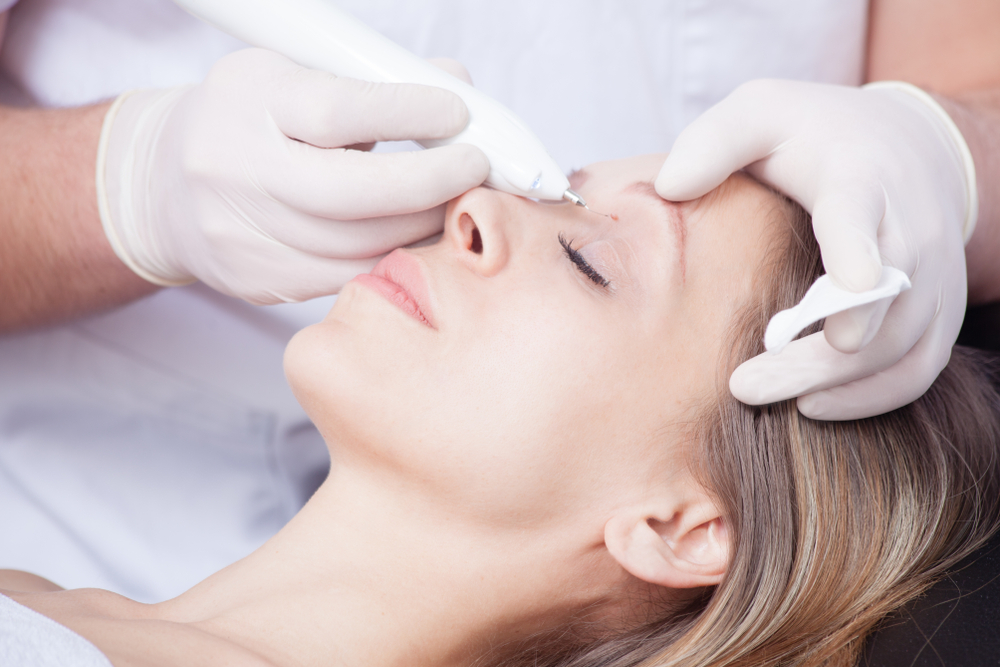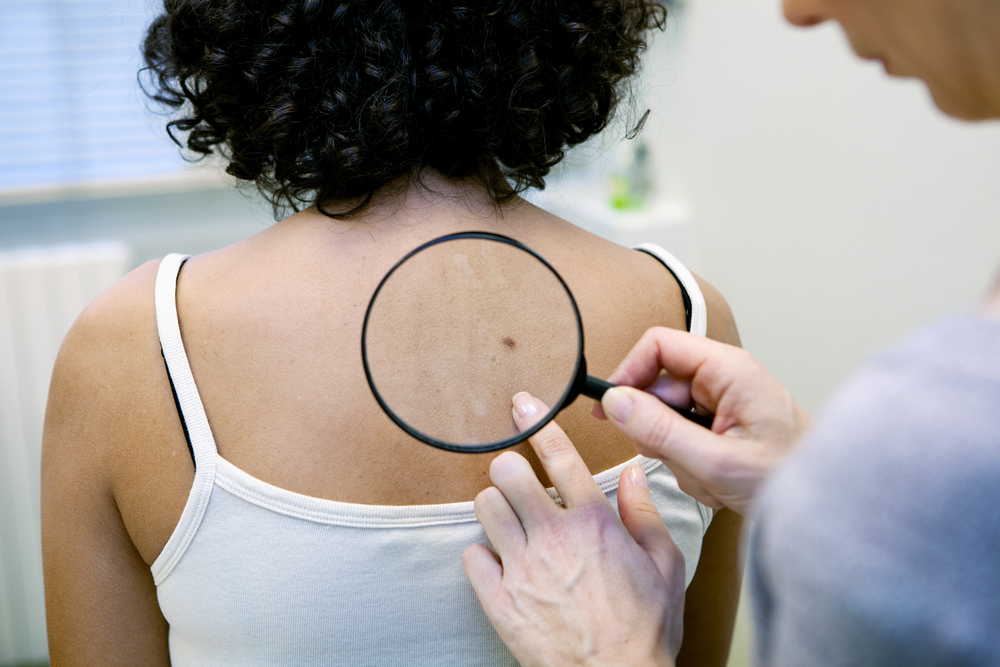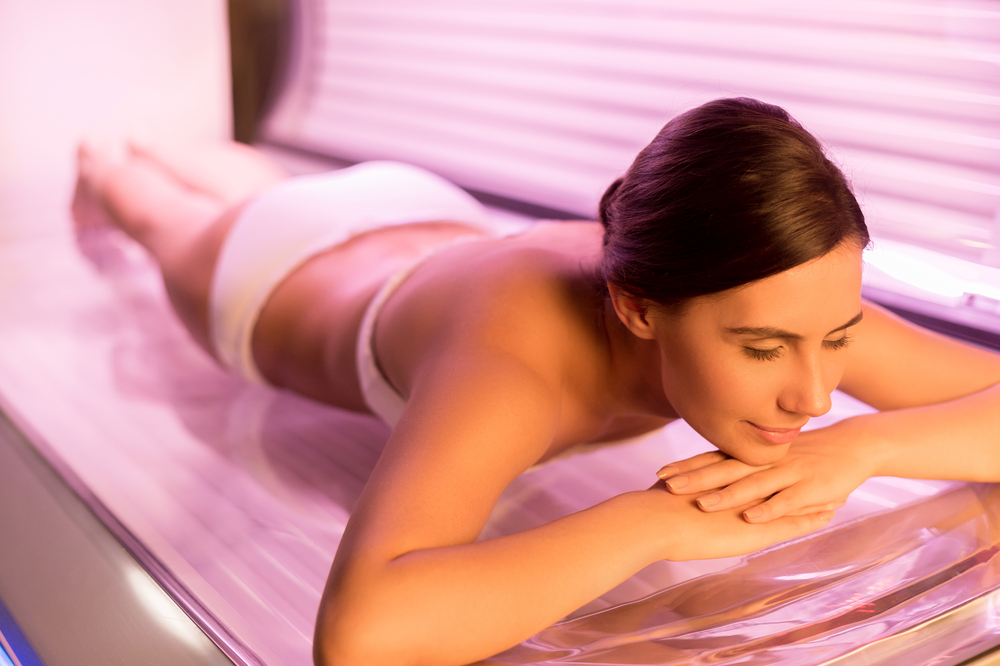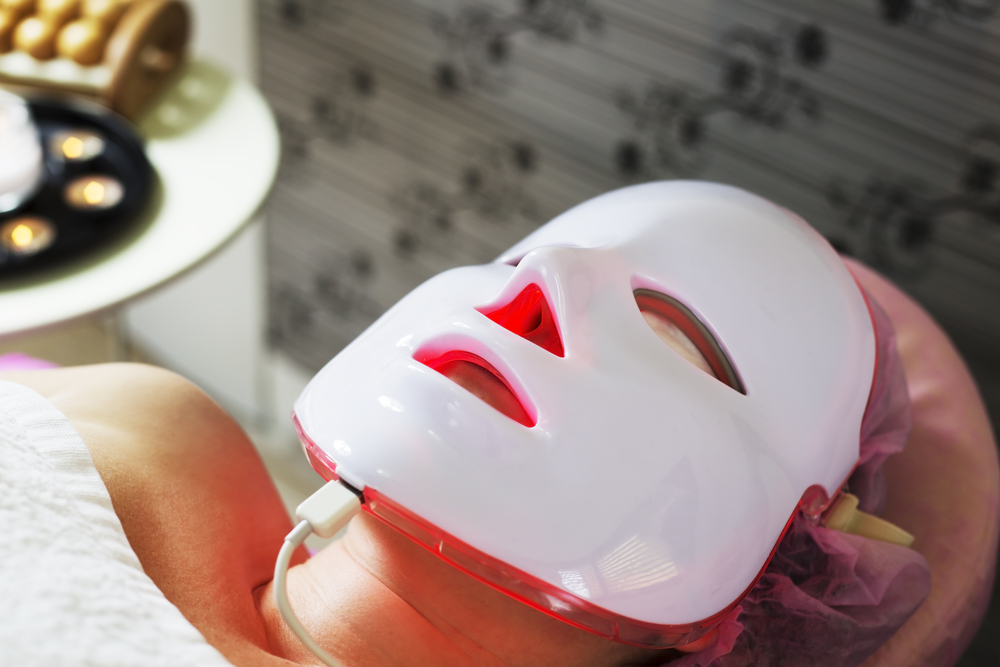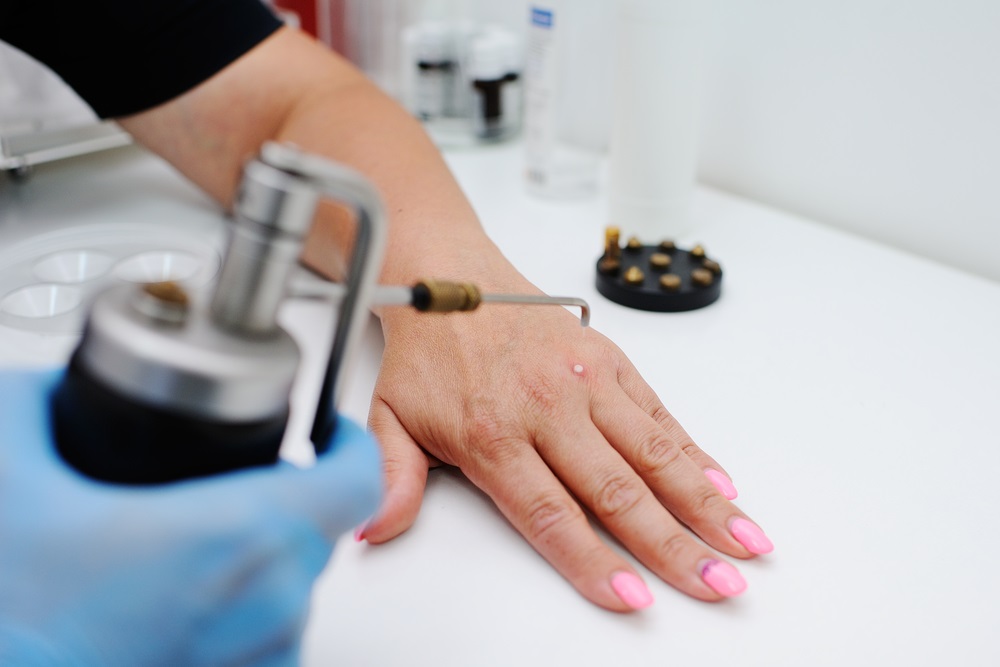- Facial warts, like all other warts, are caused by a virus (HPV) and spread by person-to-person contact.
- Facial warts are typically flat or finger-like in appearance.
- The best way to treat your facial wart and avoid complications like scarring is to visit a dermatologist.
- Home remedies are typically not recommended for facial warts due to the risk of irritating sensitive skin in a highly visible area.
According to the American Academy of Dermatology, Warts are a type of benign, or non-cancerous, skin growth that can occur anywhere on the body, including the face, hands, feet, and anogenital area. Warts are caused by a group of viruses known as human papillomavirus (HPV). Although warts can be embarrassing and sometimes uncomfortable, they are not usually dangerous to health.
Facial warts can be some of the most conspicuous and, as a result, the most upsetting for patients. There are two types of warts that occur commonly on the face: flat warts and filiform warts. Flat warts, as the name implies, have a flattened form and appear in clusters, whereas filiform warts present as individual, thin projections from the skin.
There is a wide array of treatments available for both of these types of warts, depending on the number, size, and severity of growths, in addition to the potential complications posed by any underlying health conditions. In most cases, it’s recommended that you rely on a dermatologist to remove any type of facial wart in order to minimize the possibility of scarring.
What Causes Facial Warts?
All warts, including both flat and filiform facial warts, are caused by infection with HPV. There are over 100 different strains of HPV that have been identified, most of which are bothersome but relatively harmless.
Those strains of HPV that can be dangerous are typically passed through sexual contact and may pass from person to person without symptoms; if left untreated, they can lead to cancer, but there is a vaccine now available to prevent many of these high-risk strains.
Besides flat and filiform warts, there are several other types of warts you may have heard of, including:
- Common warts – These warts are most commonly found on the hands.
- Plantar warts – These typically occur on the feet and can be more painful than other types of warts.
- Periungual warts – These typically occur along the nailbeds and are common among nail-biters.
- Anogenital warts – These typically occur in the anal or genital regions as a result of sexual contact with an infected person.
- Oral warts – These typically occur within the mouth.
HPV lives in and on the active wart and the area of skin surrounding the wart. The infection is easily spread from person to person. Areas of the skin that are open—such as a nick from shaving, a pimple that has been picked open, or a paper cut—are the easiest places for HPV to enter the body.
An object that has touched a wart, such as a towel, can also spread the virus, and it can survive and spread in damp places where an infected person has had contact, such as a bathroom or swimming pool. You can also pass HPV from an infected site on your own body to an uninfected site by the same methods.
What Do Facial Warts Look Like?
Flat Warts
Just as the name suggests, flat warts have a flat top and minimal scaling. They are only slightly elevated and are usually 2 to 4 millimeters in diameter. These warts tend to occur in groups; in some patients, anywhere from 20 to 100 flat warts can appear together.
Flat warts often appear on the faces of children, who are prone to cuts and scratches, and men, who may cut themselves while shaving. Flat warts may also appear on the backs of hands, on the arms, or on the legs. Flat warts on the legs are more common in women, who may also cut themselves while shaving.
Filiform Warts
Filiform warts appear as tiny projections that look like threads or fingers, extending 1 to 2 millimeters from the skin. They can be a variety of colors, including beige, pink, yellow, or brown. Unlike flat warts, filiform warts do not tend to appear in clusters.
These warts often appear on the eyelids, lips, nose, or neck, as well as on the fingers or legs. Filiform warts tend to grow and spread quickly from one part of the body to another. When filiform warts grow in an area of folded skin, they tend to cause discomfort, including itching or burning.
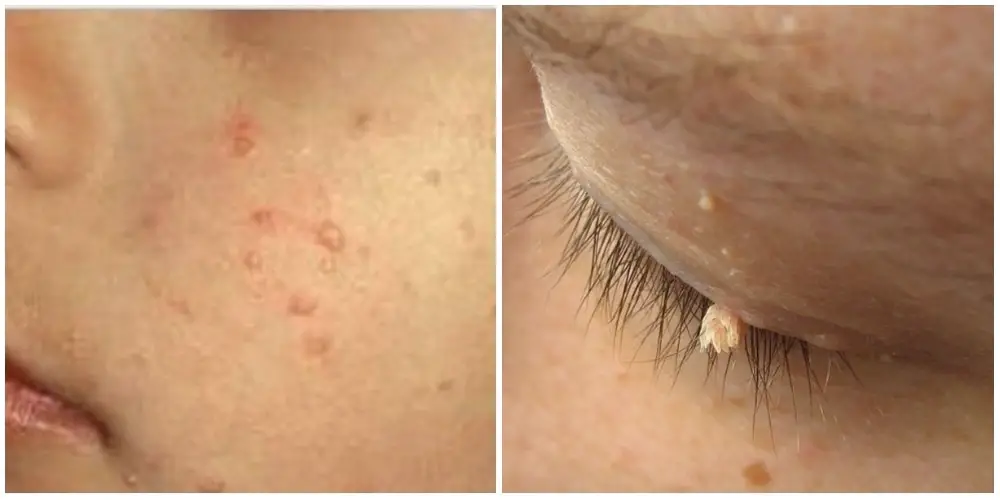
Who Gets Facial Warts?
Warts affect about 10 percent of the population worldwide. They occur more often in children, affecting up to as many as 20 percent. Females and males are equally affected. Warts are twice as common in patients with white skin compared to those with darker skin, including black and Asian patients.
Flat warts on the face are more common among children and men. Women tend to experience flat warts more frequently on their legs.
Those with compromised immune systems, such as patients with HIV or those undergoing cancer treatments, may be more susceptible to warts overall, and they may experience more extensive outbreaks.
What Treatments Are Available for Facial Warts?
The number one rule for removing facial warts is consult a dermatologist. Many wart removal methods can leave behind a scar, especially when performed without the supervision of a doctor.
Dr. Tsippora Shainhouse, a board-certified dermatologist in Beverly Hills and a clinical instructor at the University of Southern California, suggests that “[Flat warts] can be treated by electrodessication for immediate removal (this can leave a mark), cryotherapy with liquid nitrogen (can also leave a mark), or with topical preparations that either peel the skin slowly (salicylic acid, retinoids) or stimulate the immune system to kill the virus-attacked cells (imiquimod).”
For filiform warts, Dr. Rhonda Q. Klein, a dermatologist from Modern Dermatology in Westport, CT, says that “there are several treatment options including cryosurgery, imiquimod, 5-fluorouracil and other immunomodulatory agents, candida antigen injections, photodynamic treatment, and many combinations of salicylic acid treatments, just to name the most popular.”
In addition, Dr. Shainhouse advises, “[Filiform warts] are best treated by snipping them off with fine scissors. They can also be treated with liquid nitrogen; in this case, it could take a couple of weeks for the warts to fall off. A second treatment may be required, and they can potentially permanently discolor the skin.”
Topical Medications and Treatments
- Salicylic acid
- Imiquimod (INN)
- 5-fluorouracil (5-FU)
- Retinoids, such as tretinoin cream
- Benzoyl peroxide
- Cantharidin — This is a “blistering” agent derived from beetles that is painted onto the wart by a doctor. It will cause a blister to form beneath the wart, and after about a week you can return to the doctor to have the wart cut off.
- Duct tape — There are studies to back up the effectiveness of using duct tape to remove warts, but it typically involves covering the wart for an extended period of time, which may be too conspicuous for treating facial warts.
In-Office Medical Procedures
- Cryotherapy — “Freezing” can also be performed at home using a kit sold over the counter, although this is not recommended for facial warts.
- Electrosurgery (burning)
- Curettage (scraping)
- Excision (cutting)
- Laser treatments
- Chemical peel
- Bleomycin — This anti-cancer drug is injected into the wart.
- Immunotherapy — Usually a last resort, immunotherapy involves using the patient’s immune system to fight the HPV infection.
At-Home Treatments to Avoid
Dr. Klein cautions, “I would avoid apple cider vinegar and some of the other more ‘natural’ options that may be too caustic to the skin when used in untrained hands; garlic, lemon juice, and other household products may also cause a severe irritant dermatitis.”
Can Facial Warts Heal on Their Own?
According to some scientific studies, the best treatment may in fact be no treatment at all. After a period of time, the vast majority of warts will go away on their own:
- 23 percent within 2 months
- 30 percent within 3 months
- 65–78 percent within 2 years
How Can You Avoid Facial Warts?
The following recommendations can help prevent facial warts from spreading.
- Wash your hands frequently.
- Do not touch someone else’s wart.
- Do not pick at existing warts, and seek treatment as soon as possible to limit the spread of the infection.
- Wear flip-flops in public pools or showers, and use your own (clean) towel.
- Cover any existing warts with a bandage, and keep all warts clean and dry.





